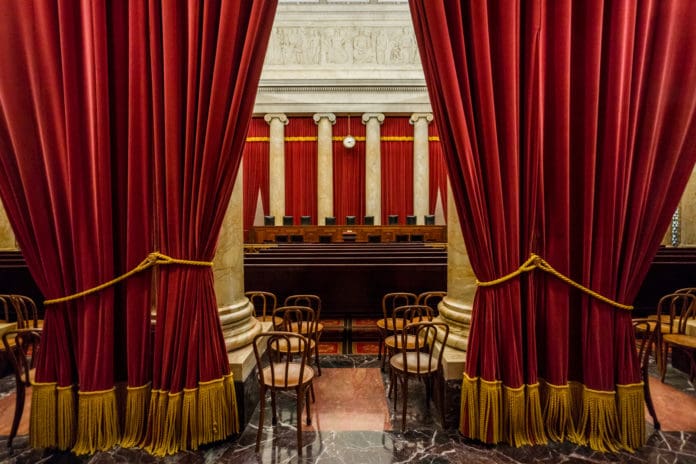
In a landmark choice on Friday, the Supreme Court docket overturned the 40-year-old Chevron v. Nationwide Sources Protection Council ruling, which had granted federal businesses broad regulatory authority. This transfer upends the businesses’ potential to challenge laws until Congress has explicitly approved them to take action. The choice represents a considerable victory for conservatives, who’ve lengthy sought to restrict the facility of unelected bureaucrats in crafting laws that curtail or restrict the freedoms of Individuals.
The court docket’s ruling cut up alongside ideological traces, with Chief Justice John Roberts writing for the conservative majority. Justices Elena Kagan, Sonia Sotomayor and Ketanji Brown Jackson dissented, with Kagan studying components of her dissent from the bench, CBS Information reported.
“Chevron is overruled. Courts should train their impartial judgment in deciding whether or not an company has acted inside its statutory authority,” Roberts wrote, emphasizing that the earlier choice required judges to ignore their statutory duties.
The unique Chevron doctrine mandated that courts defer to an company’s interpretation of legal guidelines handed by Congress if it was cheap. Critics argued this gave an excessive amount of energy to federal businesses, permitting them to form insurance policies considerably impacting American life, comparable to when the Bureau of Alcohol, Tobacco, Firearms and Explosives (nonetheless generally known as the ATF) passes restrictions on the forms of firearms residents can personal. The Supreme Court docket’s choice to reverse Chevron marks a shift towards elevated judicial oversight of company actions.
What It Means for Individuals
For the typical American, this ruling indicators a shift in how federal laws shall be crafted and applied. Federal businesses just like the Environmental Safety Company (EPA), the Division of Well being and Human Providers (HHS), the ATF and others will now face stricter scrutiny when issuing new laws. This transformation might gradual the implementation of recent guidelines and shift extra duty again to Congress to obviously outline regulatory parameters.
Supporters of the choice argue that it restores correct checks and balances, making certain that elected representatives in Congress, not unelected company officers, have the ultimate say on important coverage selections. Critics, nevertheless, fear that it might result in regulatory gridlock, with businesses much less capable of swiftly handle rising points like local weather change, healthcare wants and monetary regulation.
A Win for Gun House owners
The Supreme Court docket’s choice is especially noteworthy for gun house owners, because it curtails the regulatory authority of the ATF. The ruling successfully limits the ATF’s potential to interpret and implement laws with out specific congressional authorization, even when pushed by a presidential administration hostile to the Second Modification.
Gun rights advocates have lengthy criticized the ATF for overstepping its regulatory boundaries, significantly relating to firearm modifications and equipment. For instance, the ATF’s try and ban bump shares was not too long ago struck down in a separate Supreme Court docket ruling. With the Chevron doctrine overturned, such regulatory actions by the ATF will now face extra stringent judicial evaluation.
This authorized shift is certainly a optimistic improvement for gun house owners, who consider the ATF needs to be abolished because it has traditionally imposed burdensome laws that infringe on Second Modification rights. Whereas the ruling removed from abolishes businesses that bureaucratically search to create legal guidelines, it ought to definitely restrict them, placing the lawmaking course of again within the fingers of Congress, the place it rightfully belongs.





















